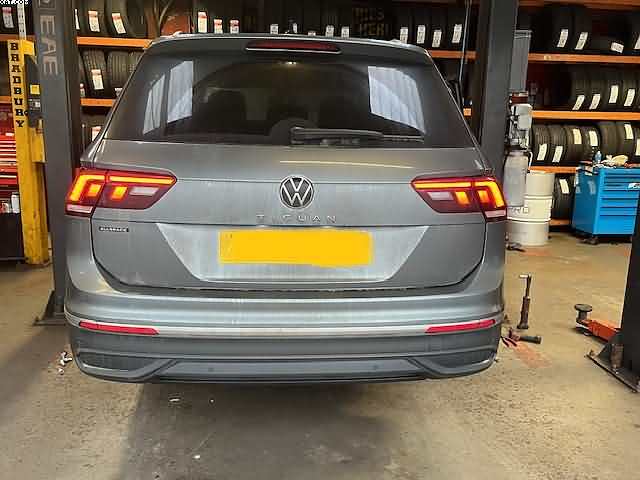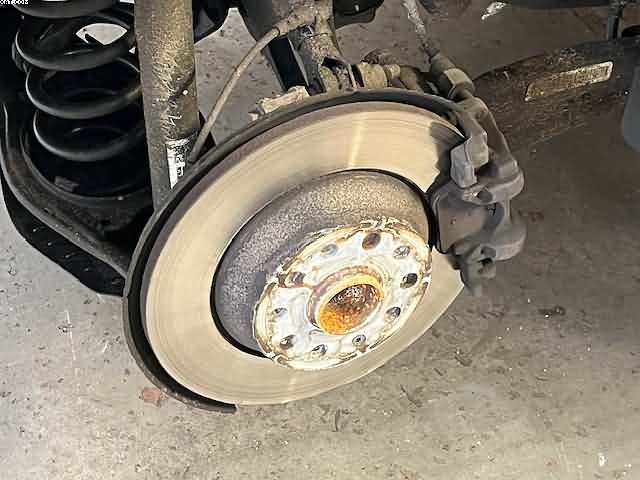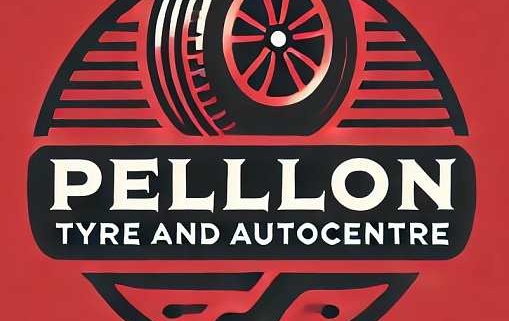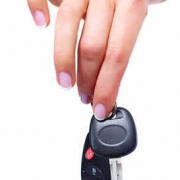VW Tiguan Electric Hand Brakes
Table of Contents
VW Tiguan Electric Hand Brakes

VW Tiguan Electric Hand Brakes
VW Tiguan Brake Problems: A Frequently Occurring Issue with Electric Handbrakes
From basic handbrake cable adjustments to complete braking system overhauls, we see a wide range of brake-related problems at **Pellon Tyres in Halifax**. However, one car that recently entered our facility—the **VW Tiguan** with a malfunctioning handbrake—brought a bit of a contemporary twist to a timeless issue.
Nowadays, the majority of people imagine a handbrake as a traditional lever that is pulled up when parking, located between the front seats. Not in the Tiguan, though. Like many contemporary vehicles, this **Volkswagen** features an electric handbrake**, which adds an entirely new degree of difficulty in the event of an accident.
Electric Handbrakes: A Challenge
At the touch of a button, electric handbrakes, also known as **EPB—Electronic Parking Brakes**, are made to **engage and disengage automatically**. An electronic handbrake applies pressure and holds the vehicle in place using **small motors inside the rear callipers**, as opposed to traditional handbrakes that use a **cable to pull on the rear brake system**.
That is all well and good—until it malfunctions!

The owner had observed that the handbrake **wouldn’t disengage properly** on the **VW Tiguan that arrived at Pellon Tyres**. After a fight, it would occasionally release, but other times it would remain locked, trapping the driver.
When a car has an electronic parking brake, this is a very typical problem. It may result from a number of factors:
The brake pads are worn. The callipers must be adjusted when the pads deteriorate, and occasionally the electronic handbrake finds it difficult to adjust.
A malfunctioning handbrake motor The brake won’t release if the caliper’s internal motor malfunctions.
**Problems with software or calibration** A handbrake that doesn’t work properly could be the consequence of any **electrical failure or loss of calibration** because these systems depend on the vehicle’s onboard computer.
Identifying and repairing the Tiguan’s handbrake-VW Tiguan Electric Hand Brakes
We had to **hook the automobile up to our diagnostic machine** in order to identify and resolve the problem. In contrast to a conventional handbrake, which may be easily adjusted via a cable, an electronic handbrake** requires software calibration.
In order to verify that the **handbrake module was displaying an error code**, we first performed a **diagnostic scan**. This indicated that there was a problem with the calliper’s internal motor.
The remedy? We had to **recalibrate the handbrake system** using our diagnostic machine after replacing the faulty calliper. The system wouldn’t identify the new calliper without this last step, and mistakes might still appear.
To the owner’s relief, the Tiguan’s handbrake was **functioning flawlessly once more** after being reconfigured.
Electric Handbrakes: What Are They?- VW Tiguan Electric Hand Brakes
Here is a brief explanation for anyone curious about how these contemporary systems work:
1. The system’s brain is the Electronic Control Unit (ECU). It determines when to apply or release the brake based on information from multiple sensors.
2. Brake Motors (Actuators): The actual work of applying or releasing the brake is done by these tiny electric motors, which are installed inside the rear brake callipers.
3. ABS & Stability Control Integration: The handbrake system is frequently connected to the vehicle’s **electronic stability control** and **anti-lock braking system (ABS), enabling automatic brake application in an emergency.
4. Hill Hold Function: When stopping on an uphill, some systems automatically apply the brake, which is subsequently released when the driver applies the accelerator.
Compared to traditional systems, these features make repairs **more complex and expensive** even while they increase convenience.
A Synopsis of the VW Tiguan’s Past: VW Tiguan Electric Hand Brakes
With the introduction of the **Volkswagen Tiguan** in **2007**, VW established a significant presence in the rapidly expanding SUV market. The German words **”Tiger”** and **”Iguana”** are mashed up to create the name “Tiguan,” which is a bit of an odd combination but is intended to symbolise **strength and adaptability**.
The Tiguan was designed from the beginning with **families and professionals** in mind, seeking a sturdy, useful SUV with the dependability of the VW name. Since then, it has grown to be one of VW’s **best-selling cars worldwide**, and it’s easy to understand why.
The Tiguan is a popular choice in **the UK**, especially in areas like **Halifax and West Yorkshire**, because it **handles well in all conditions**, whether you’re travelling up to the **Pennines for a weekend trip** or navigating hectic town traffic.
VW has developed the Tiguan throughout the years, and the latest models include **more advanced technology**, better fuel economy, and, of course, those contemporary niceties like **electric handbrakes**—which takes us back to the beginning!
Concluding Remarks
The **VW Tiguan is a fantastic SUV**, but like any contemporary car, **technological developments can offer their own set of challenges**. One such example is the electric handbrake system, which, while a great feature when it functions properly, can be a significant inconvenience when it malfunctions.
Please call into Pellon Tyres if you’re experiencing problems with your car’s handbrake (electric or not) and you’re in **Halifax or the surrounding area**. We have the equipment and know-how to **diagnose and fix** these contemporary braking systems.
- Continental Van Eco Tyres
- Airless Tweel Wheel Tyre
- Alloy Wheels on Vans
- Nissan Qashqai Battery Problem
- Anti-lock Braking System (ABS)



